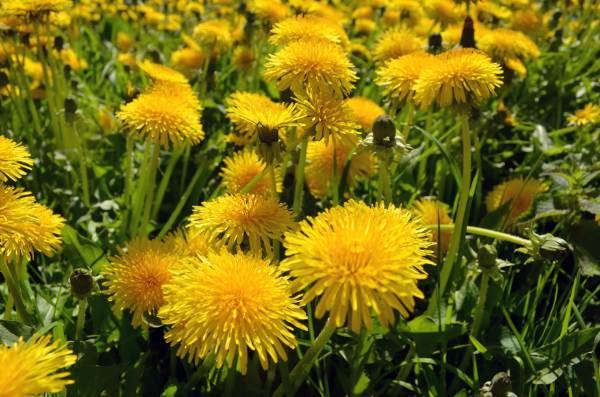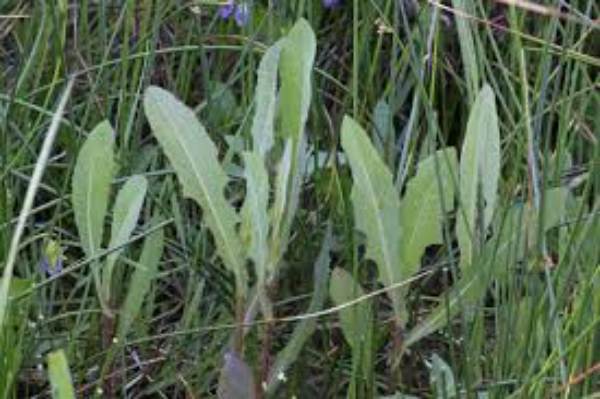You might find it challenging to compare dandelion and wild lettuce when looking up natural sleep aids or alternatives for natural pain relievers.
Both plants are in the same family and have similar features such as their flowers, so how can you differentiate between dandelions and wild lettuces? Here are some differences between wild lettuce and dandelion. Please keep reading.
What Are Wild Lettuces
Wild lettuces are plants in the Asteraceae family that are closely related to the common lettuce. Wild lettuces are mostly mistaken for dandelions as they have almost the same flower.
The smooth, light green stem of wild lettuce has a brown tap root. This stem occasionally has purple flecks. The plant’s lower portions have some prickles. The jagged edges of the broad, oval leaves. Its flowers resemble those of a dandelion.
Though all lettuces to some extent contain some of these narcotic properties, it is best known for their mildly narcotic and pain-relieving effects. In order to treat irritation, sunburn, or redness, wild lettuce is frequently made into a lotion.
What Are Dandelions
A perennial plant called a dandelion has bright green leaves that can grow up to 30 cm long. The term “Dandelion” is derived from the French “dent de lion,” which means “lion’s tooth.”
This name alludes to the “teeth” on dandelions’ leaves. Although not particularly sharp, they have indented, jagged edges.
The Asteraceae family also includes dandelion, which is a wild lettuce-like plant. Dandelions are not closely related to popular plant species, but they are related to some plants that grow like weeds.
Dandelions have a variety of uses despite their weed-like growth. They can be eaten as food for people, feed for animals, and they also have medicinal uses.

What Is The Difference Between Dandelion And Wild Lettuce
Taxonomy
Dandelions have the botanical name Taraxacum officinale (Taraxos meaning disorder, Akos meaning remedy, and Officinale referring to the official use of dandelions as herbs). The French word “dent de lion,” which translates to “lion’s tooth,” is where the English word “dandelion” comes from.” The name refers to the teeth-like indentations on the edge of dandelion leaves.
Dandelions also go by the names:
- Lion’s Tooth
- Wild Endive
- Puff Ball
- Piss-in-bed
- Royal Herb
- Irish Daisy
- Cankerworm
- Clock Flower
- Pissabed
- Bitterwort
- Blow Ball
Wild lettuces have the botanical name Lactuca Virosa. The name “Lactuca” means “milk extract,” while “Virosa” means “strong unpleasant smell or taste” or “toxic.” By combining the names, we get “milk extract with an unpleasant smell or taste,” or “Lactuca Virosa.”
Wild lettuce is also referred to as:
- Opium Lettuce
- Lactucarium
- Great Lettuce
- Tall Lettuce
- Bitter Lettuce
- Strong Scented Lettuce
- Poisonous Lettuce
- Green Endive
Note that both dandelions and wild lettuces are from the same family, As you can see, despite being members of the same family, dandelions and wild lettuces are categorized differently.
Plant Appearance
The difference between dandelions and wild lettuces is clearly seen in their size and leaves.
You should be aware that dandelions lack hair. More distinguishing characteristics of dandelions include:
- Size: Dandelions can grow up to 12 inches tall.
- Leaves: Dandelions have bright green leaves that are indented with jagged edges. When touched, the leaves don’t sting.
- Flowers: Flower stems can grow up to 30 ½ inches tall. One daisy-like flower per stem, which develops into seed heads that aid in seed dispersal, is all that is present. While they can bloom at any time of the year, dandelions typically bloom in May and June. In the daylight, the flowers are spread out, and at night, they are close together.
- Seeds: The very little seeds resemble fluffy parachutes. They spread out as a result of the wind and grow into new plants in new locations.
Wild lettuce has a tough stem with a brown tap root, and on occasion, the stem may even have purple spots. Other cool ways to identify wild lettuce are:
- Size: Wild lettuces can grow up to 6 feet (72 inches) tall.
- Wild lettuce leaves have teeth, just like dandelion leaves do. The difference is that wild lettuce leaves are not as indented as the leaves of dandelions, and their leaves are broader and more oval. The lower portions of wild lettuces have a few prickles.
- Flowers: Wild lettuce flowers look a lot like dandelion flowers. However, unlike dandelions, which only produce one flower per stalk, wild lettuce plants produce multiple flowers on a single flower stalk.
- Wild lettuce seeds have a similar appearance to dandelion seeds. Take a mature flower and blow the seeds into your garden to start dandelion or wild lettuce seeds. The seeds will grow when the environmental conditions are right.
Distribution And Origin
While both wild lettuces and dandelions can be found on several continents across the world including North and South America, Europe, Asia, and Australia, wild lettuces are native to Eurasia while dandelions are said to be native to North America.
The consistent trade between The spread of dandelion and wild lettuce across several continents is primarily due to America and Europe.
Uses
Wild lettuces and dandelion use differ. Both of these plants have medicinal qualities, but their applications in the medical field are different.
Dandelions can be utilized for a variety of things.
- Food: A lot of animals, including humans, enjoy eating dandelions. animals like birds, pigs, goats, sheep, cows, etc. eat dandelions and it can be used to control their population. People use young dandelion leaves to prepare salads and other types of food, but take note that mature leaves are bitter and not edible. The young leaves have a spinach-like flavor.
- Beer, wine, and tea: People in the US and Canada use the seeds of dandelions to make beer and wine. Dandelions’ roots can also be roasted and used in place of coffee by some.
- Medicine: Dandelion root is one of the roots of plants that are listed in the US Pharmacopeia. Dandelion root tea supports the human immune system and keeps the kidney, liver, and bowels healthy.
- Dandelion: Not everyone wants them growing close to their house or garden. For many people, it will always be a bothersome weed plant.
Utilizations for wild lettuce include:
- Medicine: Even though every type of lettuce has traces of pain-relieving and narcotic properties, the level of these properties is higher in wild lettuces. Extracts from wild lettuce are made into a variety of creams that are used to treat irritations like sunburn and redness.
- Animal Food: Wild lettuce leaves are bitter and usually ignored by people. But animals like deer consume the leaves.
Lifespan
Another major difference between dandelions and wild lettuces is their lifespan. Dandelions are perennial, which means they have a lifespan of more than two years. But since wild lettuce is biennial, it only lasts for two years before dying.
If you have large dandelion-like weeds with broad leaves growing in your garden that are dying within two years, you probably have wild lettuces and not dandelions.

